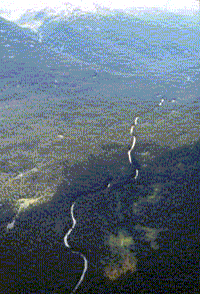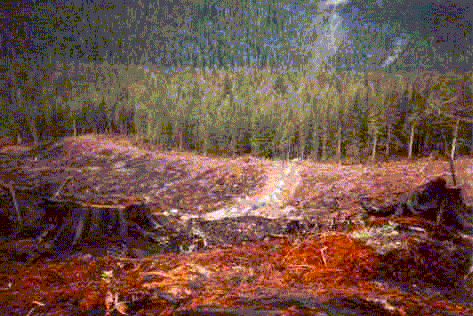The boreal forest ecosystem stretches across most of Northern Canada, occupying approximately 35%
of the country’s landmass
“Conjuring up images of a vast pristine wilderness, an unending expanse of conifers in an area that has been left untouched by human interference”
Yet 63% of Canada’s boreal forest has been lost or is currently threatened by human activities

The Stoltmann Wilderness is a 260,000-hectare wilderness
area located in the Upper Elaho Valley,
a three-hour drive north of Vancouver

It is part of an ecosystem that contains the most southerly Grizzly bear and Moose
populations on the Pacific coast and some of Canada’s oldest trees
The timber company Interfor began extracting timber
from the area in the 1990s

In 1999 the company planned a new road into the forest
to allow access to new timber supplies
Conflict
Violent confrontations occurred over the new logging area proposal. The proposed road route would cut through a grove of Douglas fir trees thought to be the oldest in Canada
Opponents of the development are concerned about the impacts
of the development on the ecological integrity of the wilderness, especially
the damage to the ancient trees that the area is renowned for, while Interfor
employees are concerned that a forced abolition of the plan would have
detrimental consequences for their jobs and the local economy
Management
After court action from both sides, Interfor has deferred the road development in order to negotiate with local First Nations and environmental organisations about how to reduce its potential impacts
The Western Canada Wilderness Committee is currently petitioning the federal and provincial governments for a legally protected ‘Stoltmann National Park’